The efficiency, sustainability, and data-driven decisions are the key to the future of feeding a growing global population. In 2025, a device that makes such a transformation possible is the Crop Management Software (CMS), a complex tool that will take the agriculture sphere to the next stage of precision farming and, above all, not intuition anymore.
Crop Management platform is not merely a computerized accounting system but the brain or the nervous system of a farm in the new era. Through satellite imagery, IoT sensors, predictive analytics/machine learning, such systems are able to take on the heavy amounts of field, weather, and financial data and process them into actionable insights. This enables any farmer/agribusiness all over the world to streamline all their choices- seed variety and timing to use fertilizers to pests and diseases estimating the time.
What Is Crop Management Software?
Crop Management Software (CMS) is a platform that is normally cloud-based, integrated to track, analyze, and streamline every part of crop production, starting with pre-planting planning to harvest and storage. It offers a field level generalized view of the functioning of the farm, making the farm farming skills be site specific and thereby holistic.
Crop Management platform manage:
- Agronomic Data: Crops health indices (NDVI), quality of soil, moisture and disease/forecasting of a pest.
- Operational Tracking: Recording state activities of the field, use of machinery, fuel consumption, and man hours.
- Resource Optimization: The creation of Variable rate application (VRA) maps that produce accurate and efficient utilization of seeds, fertilizers and water.
- Financial Management: Monitor input costs, level of inventory and profitability to a field or type of crop.
- Translation, Compliance and Traceability: Automation of records keeping requirements on regulatory and sustainable audit reports.
Why Do You Need Crop Management Platform?
The Crop Management Software adoption around the world is gaining pace given its three non-negotiable industry requirements of profitability, efficiency and sustainability.
1. Profitability possession through Precision
CMS has a direct effect on bottom line removal of waste and maximization of yield potential. Through creation of VRA maps out of soil and vegetation index, CMS allows that the most important cost to any farm, inputs, to be used where necessary.
- Lowered Cost of inputs: When farmers employ accurate farming instruments, 15 to 30 percent less input volumes (fertilizers, chemicals) have been realized. This effectiveness is directly converted into savings.
- Yield Increase: With the high efficiency in the usage of inputs and the closeness in alert of diseases, there is generally a 5-20 percent increase in the yield.
- Data-Driven Planning: Farmers abandon intuition-based planning (or gut feeling) in favor of strategic decisions, which are made based on past historical data of profitability per field or crop.
2. Increasing Environmental Sustainability
Modern sustainable agriculture is made possible through CMS which assists farmers to address the increasing consumer and regulatory demands of transparency and environmental responsibility.
- Water Conservation: CMS is able to use the combination of soil moisture sensors and hyper-local weather to optimize the irrigation timetables which in many cases decreases water usage by 8-20% relative to legacy processes.
- Less Runoff: Accuracy in the application of fertilizers and chemicals reduces the nutrient runoff into the waterways by a large margin and this will contribute to healthier soil in the long run.
- Compliance: The software is fully automated to make automatic log of all applications, input and activity to produce ready-made reports to be used in organic certifications, food safety, and environment audit requirements.
3. Operational Risk and Scale Management
The farming methods nowadays imply complicated logistics on big farms, which are sometimes controlled by vast teams that are spread out. CMS has a centralized control, which minimizes human error and risks in operations.
- Proactive Risk Alerts: Systems use real-time data analysis to generate early warnings about pest outbreaks, nutrient deficiencies, or frost and enable farmers to actually respond to the risks instead of asking themselves why they have occurred.
- Equipment and Labor Management: The software monitors the whereabouts of the equipment, fuel usage and maintenance dates and schedules, reducing the expensive hours of downtime. It also simplifies the field labor management with assigning and tracking field tasks through the mobile apps.
- Traceability: In the case of agribusinesses, the crop management software provides end-to-end traceability of its supply chain, which is important in recalling its products in case of safety reasons and in satisfying the premium market requirement of transparent sources.
List of Top 10 Crop Management Software
1. Climate FieldView (Bayer/Monsanto)
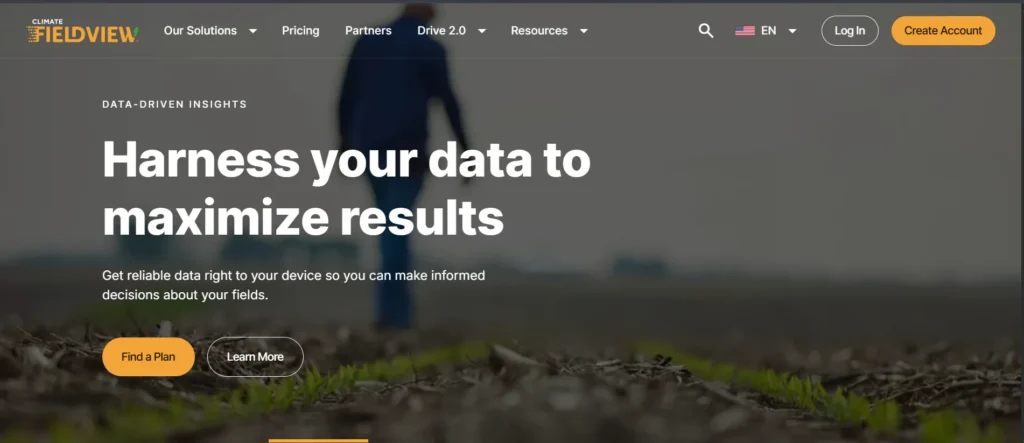
Website: https://climate.com/en-us.html
Climate FieldView is one of the top digital agricultural platforms that has highly advanced data visualization and field monitoring technology. It focuses on combining the information of multiple sources- such as planting monitors, yield mapping systems and aerial imagery to deliver profound field-level agronomy. The actual strength of FieldView is its Seed and Fertility Scripts that enable farmers to create Variable Rate Application (VRA) maps to use inputs accurately.
Farmers of row crops (corn, soy, wheat) are the largest users of it, and it is fully compatible with the prominent equipment brands and can serve as a consolidation center of all data related to precision operations. It is constantly updated with new scientific models and weather integration tools in a platform.
- Key Features: Field Health Imagery (satellite/aerial), Yield Analysis & Mapping, Variable rate Seeding/ Fertility Scripting, Seamless integrations of equipment, Weather Layers.
- Pros: Good data visualization and usability; good historical data storage; good in creating VRA prescription; great mobile access.
- Cons: majorly used as a row crop; its full feature package may be costly in large farms; to work well a lot of data must be supplied.
- Pricing: Starts $249/ year
2. Trimble Ag Software
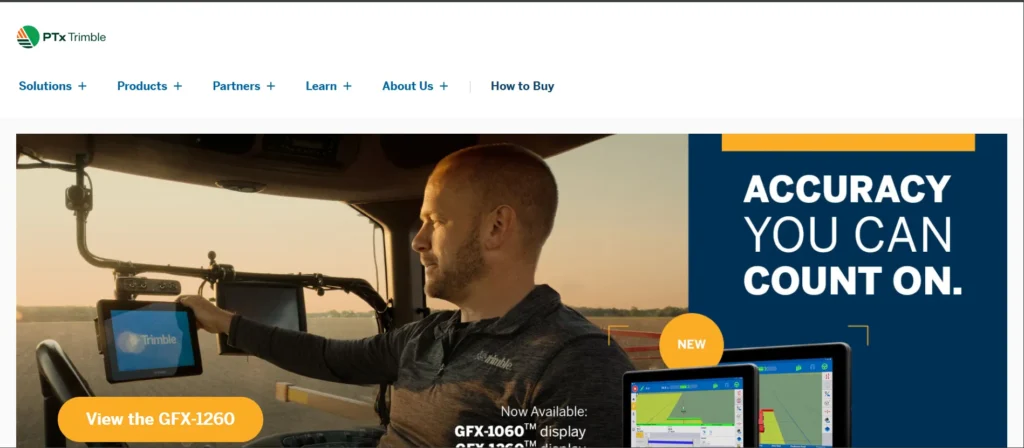
Website: https://ww2.agriculture.trimble.com/
Trimble Ag Software is a robust, long-established brand and industry leader in the field of precise farming that is well-intertwined with GPS and fleet management technologies. The software, developed by Trimble, a spatial and measurement technology giant, has a high capability of managing machinery, creating field maps in centimeter accuracy, and planning big field fleets.
As a reliable Crop Management Software, its universality remains in farm record keeping, regulatory compliance, and intense financial and profitability analysis. Trimble provides both mobile and desktop solutions that synchronize real-time data and therefore, it is important to farms that use Trimble’s own hardware (auto-steer, application controllers) but can operate with other brands and use industry standards.
- Key Features: Advanced Field Mapping (GIS), Fleet/Equipment Tracking, Built-in GPS/GNSS, Water Management options (Irrigation), Finance, Mandatory compliance Reporting.
- Pros: Out of the world machine and GPS integration; full-scale and sophisticated operations; financial and risk management tools; solid performance.
- Cons: High learning curve to set up initially; it is relatively expensive at the start; the mobile app is not as modern as some cloud-native-based competitors.
- Pricing: Custom/Enterprise with quotation according to modules and size of organization.
3. Agworld
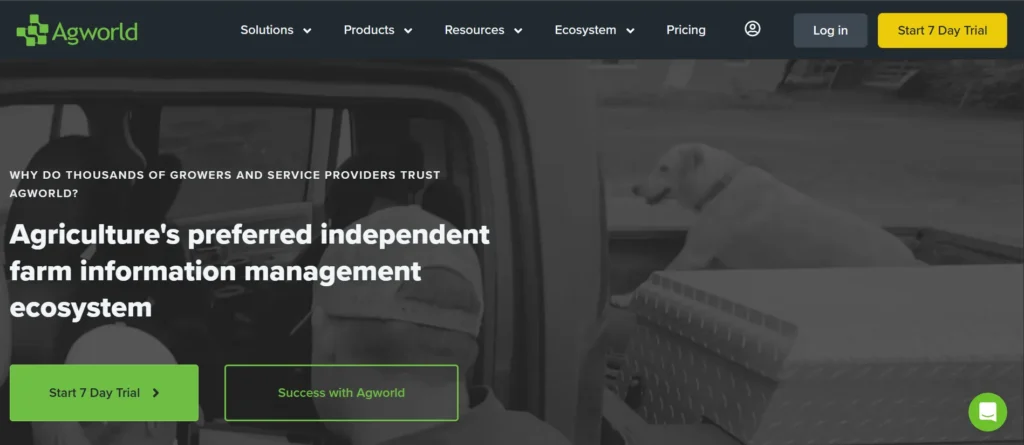
Website: https://www.agworld.com/au/
Agworld is characterized with the emphasis on cooperation and communication among farmers, the farm employees and the external agronomists/advisors. The cloud platform is centralized in data collection, crop planning, and budgeting so that many stakeholders can use the platform to access and provide contributions in real-time to operational data. Agworld has strong abilities in the realm of planning, which lets the users create correct cost-of-production budgets when planning the season prior to its commencement and monitoring variances at fields.
This teamwork model will guarantee that the agronomic advice will be directly saved into the farm execution plans, all inputs and observations will be registered in a digital format to comply with all the requirements and be provided in an auditing form of reports. Its high focus on reporting acts in controlling risk as well as improving profitability through the shared knowledge.
- Key Features: Through the Crowd Farming Membership, its most notable features include joint micro-planning and budgeting, real-time information sharing with Agronomists, financial benchmark prices (Cost per Hectare), compliance reporting, field scouting that is mobile-first, and mobile-first scrap-in data entry.
- Pros: Its teamwork and advisory services are very good; its planning and budgeting tools are great; its compliance and record keeping are good; it has great mobile and offline features.
- Cons: needs external advisors to be buy-in; profitability analysis can be complicated to set up; it is not as much focused on sophisticated VRA prescriptions as on pure precision tools.
- Pricing: Starts $1695/ year
4. Granular Insights (Corteva Agriscience)
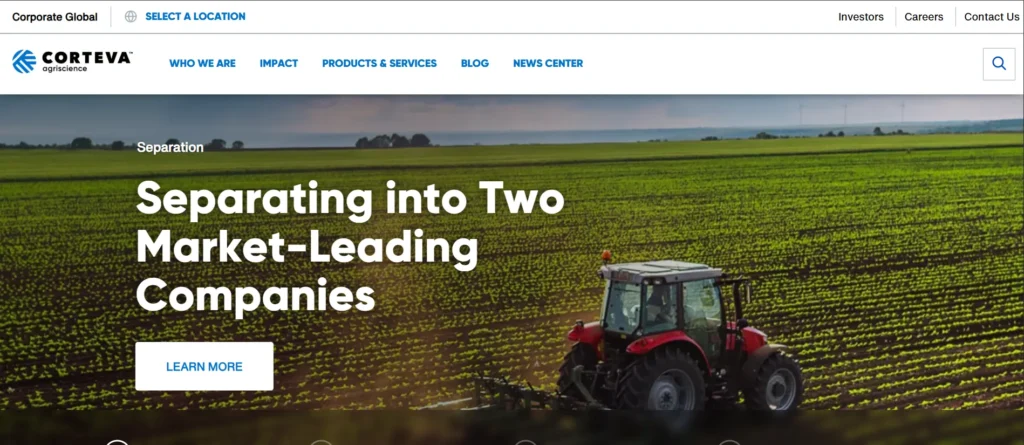
Website: https://www.corteva.com/
Granular is a company owned by Corteva Agriscience, offering an advanced Crop Management Software suite oriented toward maximizing farm profitability and labor flow efficiency. The platform is designed for mid-to-large-size commercial farms where managers can monitor and allocate tasks, track labor hours, and analyze financial performance across multiple fields.
Granular excels in operational management, enabling farm owners to assign tasks to field workers via mobile devices and monitor planting, spraying, and harvesting processes. Through its Insights module powered by Corteva’s proprietary agronomic data managers can make smarter in-season decisions based on economic impact, supported by predictive analytics on crop health and yield projections.
- Key Features: Labor and Task Management, Financial Tracking (Cost of Production), Mobile Task Assignment, Agronomic Modeling and Predictive Analytics, Yield Mapping and Analysis.
- Pros: Best in employment and operational efficiency; good combination of corporate agronomic data; good yields and financial analysis; mobile applications make it easier to coordinate fieldwork.
- Cons: More geared towards large and business-oriented operations; this operation requires huge investment into management organization; this type of operation is less effective in small or diversified farms.
- Pricing: Custom/Enterprise with quotation according to modules and size of organization.
5. FarmERP (Developed by Shivrai Technologies)
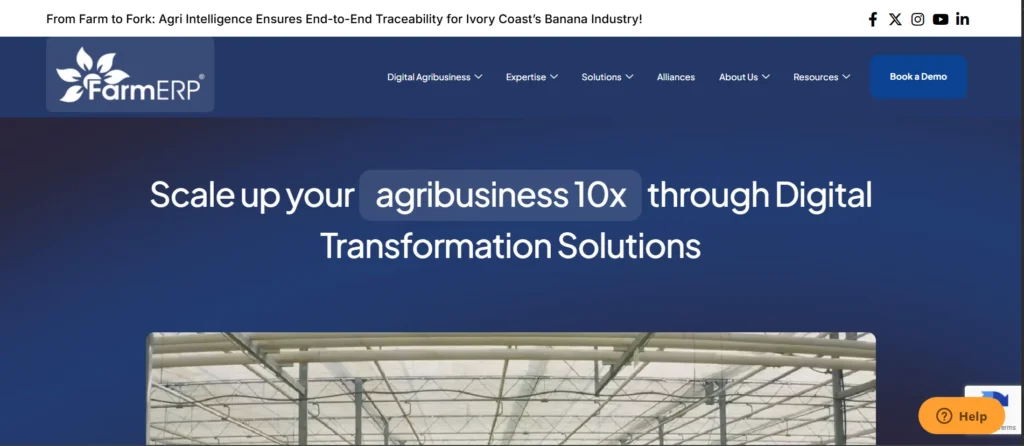
Website: https://www.farmerp.com/
FarmERP is a high-end platform that provides an incredibly versatile platform which can support the stakeholders of the entire agricultural value chain, such as corporate farms, processors, research institutes, smallholder farming projects. Its end to end modules encompass all aspects such as sophisticated crop planning and resource allocation, refined supply chain management after harvest as well as compliance to export factors.
FarmERP is characterized by its sustainability and traceability, utilizing the blockchain technology to ensure the availability of transparent accounts of the farm-to-table path. Its scalability and multi-location and multi-commodity capabilities make it a perfect option to large agribusinesses which operate on the world-wide scale in various climate zones.
- Key Features: End to End Traceability (Blockchain), Supply Chain management, Crop planning and monitoring, integrated financial accounting, quality control modules, Multi commodity and Multi location support.
- Pros: Can be easily scaled to large businesses; has better supply chain and tracing capabilities; has a strong capability to support corporate compliance and sustainability reporting; can support multiple languages and multiple currencies.
- Cons: Too complicated to use by smallholder farmers, expensive implementation and training will be needed, and customization process may require technical assistance.
- Pricing: Custom/Enterprise with quotation according to modules and size of organization.
6. Agrivi
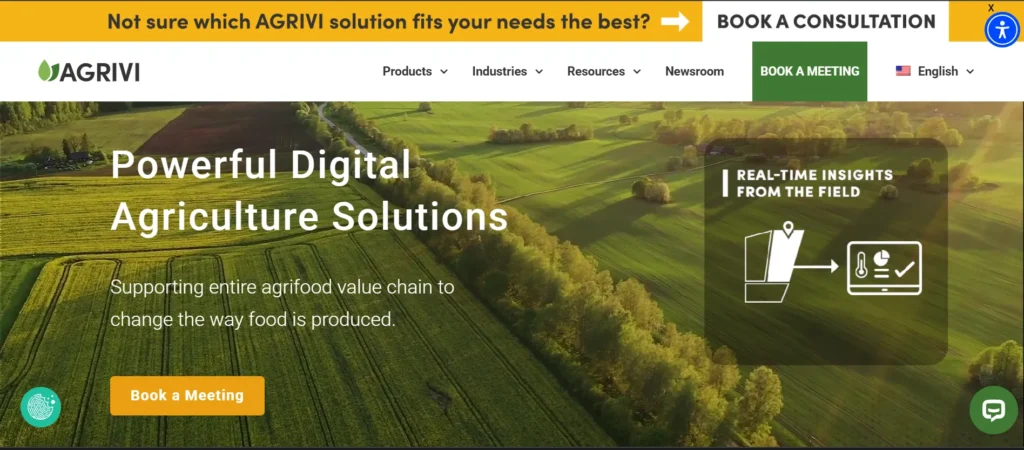
Website: https://www.agrivi.com/
Agrivi provides a farm management system in a cloud model which is known to have superior user interface and strong data analytics system. This system embraces crop arrangements, automatic scheduling of activities and live tracking. Agrivi is a very good risk detection tool that offers an alert on a possible pest and disease outbreak based on combined weather forecasting and predictive models.
It is scalable and thus appropriate in responding to small-farm as well as large business operations. The centralization of all operational, financial, and agronomic data helps Agrivi make arduous processes of farm management simpler and enables growers worldwide to make progressive decisions.
- Key Features: Various sorting and ownership of pests and diseases, Various scheduling of tasks, Various monitoring of finances, a combination of weather predictions, monitoring of resource consumption, management of inventories.
- Pros: Very user friendly and intuitive interface; a great predictive risk management tool; a great financial tracking tool; can be extended to the size of a large farm.
- Cons: Sometimes the functionality of mobile apps is less robust than the desktop application; more sophisticated machine integration can be added.
- Pricing: Custom/Enterprise with quotation according to modules and size of organization.
7. Cropwise Operations (formerly Cropio)
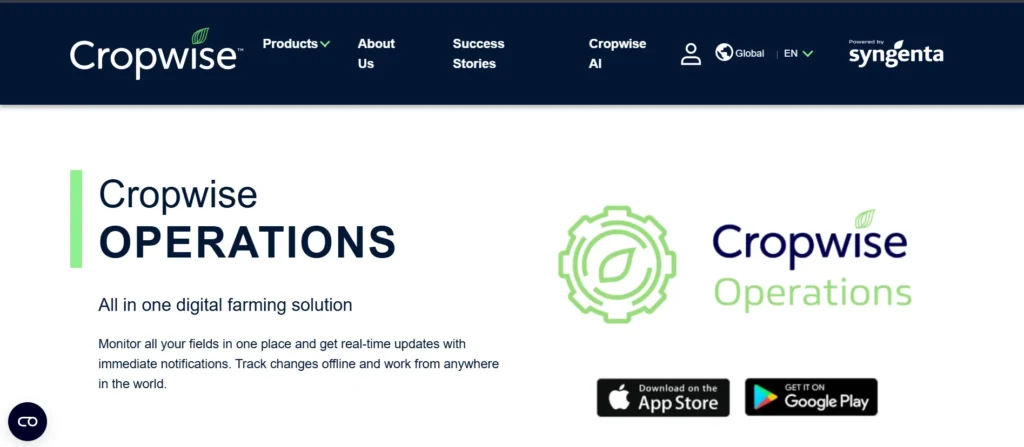
Website: https://www.cropwise.com/operations
Cropwise Operations is a potent digital agriculture platform and a leading Crop Management Software, now controlled by Syngenta, characterized by its emphasis on remote sensing and field visibility. The programs use satellite imagery and vegetation indices (e.g., NDVI) to provide real-time updates on field health, biomass, and problem areas.
This vital visual information enables accurate scouting and early detection of issues such as nutrient deficiencies or water stress before they become limiting. Cropwise also facilitates task control, yield prediction, and analysis of past results, helping farmers track minute differences across large acreages. Its strength lies in providing remote, data-driven visibility to efficiently optimize resource application and manage field operations.
- Key Features: SAT, Crop Monitoring (NDVI): Satellite-based observations Tomography, Field Visualization and Mapping, Task Management and Control, Yield Prediction, Scouting Tools.
- Pros: Better control of the outside world, visual field imaging; depression delineation, scouting and intervention are very effective; it performs well in large fields.
- Cons: less intensive in regards to detailed financial accounting; reliance on satellite imagery means that the system needs clear skies; intended to handle crop management in far away regions.
- Pricing: Custom/Enterprise with quotation according to modules and size of organization.
8. FarmLogs (Aura)
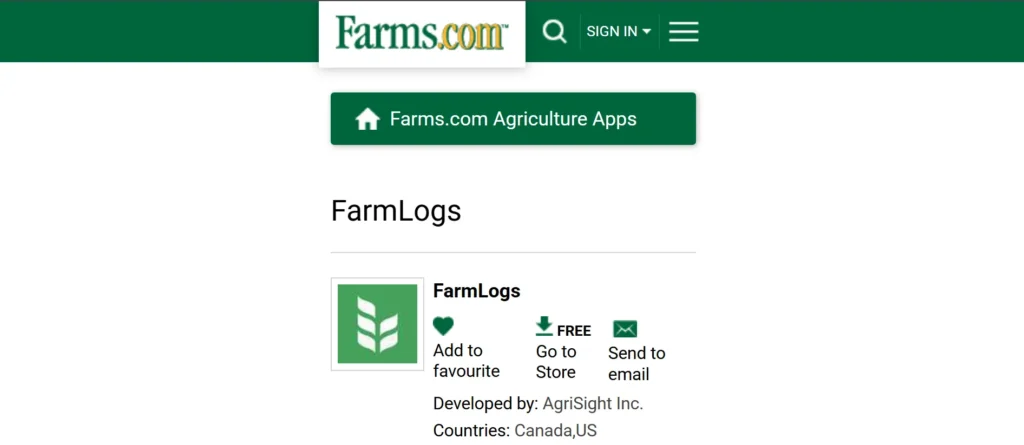
Website: https://app.farmlogs.com/
FarmLogs is highly commended due to its simplicity, quickness, and ability to use it on a mobile device, which is why it is one of the most popular platforms, particularly independent farmers who want quick insights. It is centered on basic operational management whereby farmers find it easy to capture field operations, keep track of inputs, crop performance and also manage simple finances.
Its platform is renowned because it boasts of a quick and easy to use interface that simplifies day to day record keeping and offers them with a smooth weather application and transfer. FarmLogs means that the grower can easily see the profitability of various fields and crops by combining financial information with yield outcomes and make better decisions through easy to digest data visualization.
- Key Features: Mobile Data Synchronization, Financial Tracking and Budget Management, Real-Time Weather Integration, Simple Field Activity logging.
- Pros: It has a very easy and quick installation, the field application is very user-friendly, it has an inexpensive entry point, and its data synergizing is outstanding.
- Cons: is a bottom-up VRA scripting and enterprise capabilities to higher-priced platforms, which contains minimal or no support with special machinery telematics.
- Pricing: Custom/Enterprise with quotation according to modules and size of organization.
9. Croptracker
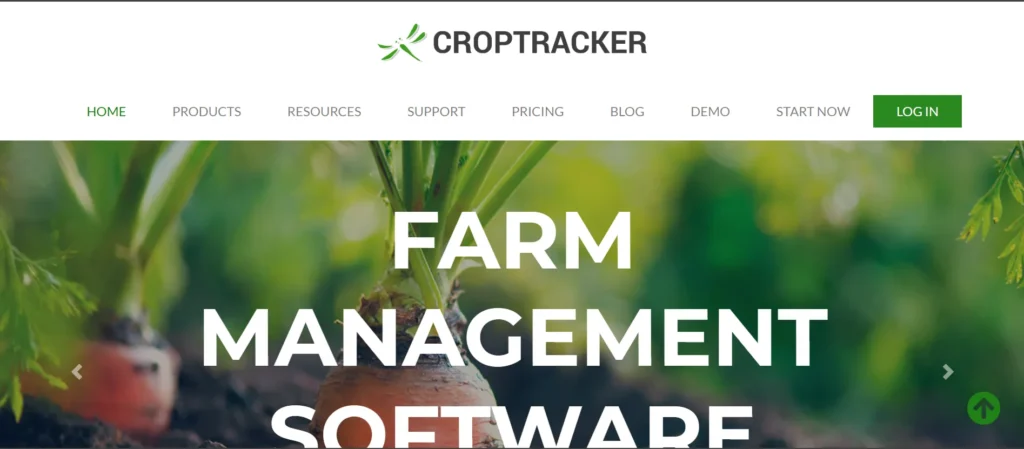
Website: https://www.croptracker.com/
Croptracker is an effective set of crop management software tailored to specialized and high-value crop growers, including vineyards, orchards, and vegetable farms. The platform is very efficient in terms of compliance and inventory control, which entails strict record keeping to achieve high standards of food safety and exports, and traceability.
Croptracker items are used to monitor every labor hour on each task, quality control on harvest, inventory control in packinghouse also, packinghouse shipment logistics. Its niche focus on post-harvest and compliance is such that the high value crop does not suffer quality loss in quality and delivery to the market according to the demands of the market.
- Key Features: Extensive Compliance Record-Keeping, Packing/Storage/Inventory Management, one of the features is to have quality control to the harvest, Tracking of labor by Task, and Sensor Integration.
- Pros: Specialized and high value crops; strong compliance and food safety instruments, powerful post harvest inventory control, good traceability functionality.
- Cons: Superfluous to a basic commodity row crop; not as simplistic at prices as general platforms; not as agronomy Theoretical on advanced foretelling as the others.
- Pricing: Custom/Enterprise with a quotation according to modules and the size of the organization.
10. AgriWebb
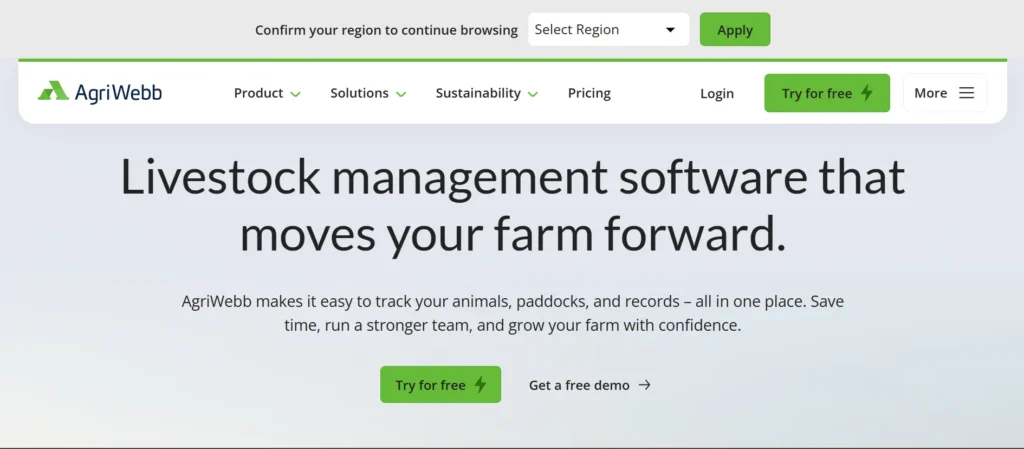
Website: https://www.agriwebb.com/
AgriWebb is also listed as a key reference point, but its main specialization is livestock management, which is nonetheless an important element often integrated into Crop Management Software for grazing and pasture management. The platform provides comprehensive features for monitoring animal health, breeding patterns, and medication history.
AgriWebb can supplement livestock records with mapping tools to help farmers make informed decisions regarding paddock rotation and pasture use, directly affecting soil health and crop sustainability. Its mobile application and real-time data access simplify decision-making for mixed-operation farms managing both herds and crops.
- Key Features: Full Livestock Tracking (Health, Breeding, Genetics), Paddock Rotation Management, Mobile Data Access/Offline Sync, Built in Farm Mapping.
- Pros: Leading in livestock and grazing management in the industry; mobile feature is widely applicable in the remote field work operations; offering vital data on sustainability of mixed operations.
- Cons: Not really a crop agronomy product (requires VRA/seeding scripts); smaller farmers cannot buy it as easily; the use of which is mainly oriented on animal welfare and parity.
- Pricing: Custom/Enterprise with quotation according to modules and size of organization.
Suggested Read: Agriculture Business Ideas
Crop Management Software Comparison Table
| Software | Lowest Monthly Price (Approx.) | Target Farm Scale | Best For | Key Focus | Included Firewall |
| 1. Climate FieldView | Custom/Tiered | Large/Precision | VRA Scripting & Yield Analysis | Data Aggregation, Predictive Agronomy | No |
| 2. Trimble Ag Software | $83.25/month (Annual) | Large/Commercial | Machine Integration & GPS | Fleet Management, Financials | Yes |
| 3. Agworld | Custom/Per User | Mid-to-Large | Agronomist Collaboration | Budgeting, Compliance, Shared Planning | No |
| 4. Granular Insights | Custom/Acreage | Mid-to-Large | Labor & Operational Efficiency | Task Management, Economic Forecasting | Yes |
| 5. FarmERP | Custom/Enterprise | Corporate/Enterprise | Global Supply Chain & Traceability | Multi-Commodity, Sustainability Compliance | Yes |
| 6. Agrivi | Subscription-based | Small to Enterprise | User Interface & Risk Detection | Pest Alerts, Automated Scheduling | No |
| 7. Cropwise Operations | Custom/Enterprise | Mid-to-Large | Remote Sensing (Satellite) | Field Visibility, Biomass Monitoring | Yes |
| 8. FarmLogs | $15/month | Small to Medium | Simplicity & Quick Financials | Field Logging, Basic Profitability | No |
| 9. Croptracker | Custom/Modular | Specialty/High-Value | Compliance & Post-Harvest Inventory | Food Safety, Quality Control | Yes |
| 10. AgriWebb | Custom/Herd Size | Mixed/Livestock | Pasture Management | Herd Health, Paddock Rotation | No |
Conclusion
Crop Management Software represents the key driver of the worldwide agricultural revolution to Precision Agriculture. The market is healthy and diversified, providing solutions to all types of operations, including a simple and inexpensive logging of FarmLogs to a high-tech and enterprise level traceability of FarmERP and precision scripting deployed in the Climate FieldView.
Depending on three variables, the nature of operation (crops, livestock, or mixed), the scales (smallholder vs. corporate), and integrations (GPS, sensors, financial accounting) one will have an opportunity to select software to use. Due to investments in data-driven decision-making, farms can become more productive, less harmful to the environment, and more profitable as the world is getting more challenging.
FAQs
1. What Is Precision Agriculture And How Is This Software Being Used To Make This Successful?
Precision Agriculture (PA) is an agricultural management idea, which is founded on acting, gathering, and reacting to variations, within a field. This software allows PA by harvesting site-specific data (through sensors, GPS location technologies and satellite imagery) and processing it to form Variable rate application (VRA) maps and instructing the machines to make only-needed input applications (such as fertilizer or water) to save resources and exploit yield potential.
2. Does Crop Management Software Obviate The Services Of A Human Agronomist?
No. Crop management platform will not substitute the skill of a human agronomist as it offers data, alerts, and predictive models. The software is like a Decision Support System (DSS), which transforms raw information into actionable insight. The agronomist is able to use these insights together with their local knowledge and expertise to make the final and strategic management moves.
3. Can All These Solutions Be Used In Small-Scale And Subsistence Farms?
Yes, increasingly so. Whereas previous approaches to the market were focused on large commercial farms, alternatives such as FarmLogs and mobile-first solutions are now focused on simplicity and affordability by smallholders. The cloud implementation strategy reduces the initial investment by a considerable margin, thereby allowing precision tools to be used by smaller operations in global markets.
4. So, How Do These Systems Monitor The Condition Of Crops Without Necessarily Being Able To Check Them Out?
CMS uses Remote Sensing. Plants reflect the satellite images (such as Sentinel-2) and drone information. The software can then use this information to create Vegetation Indices (e.g. NDVI or the Normalised Difference Vegetation Index), which are precise indicators of chlorophyll activity and biomass. Minimum NDVI readings will immediately alert the farmer to regions that are under water stress, nutrient deficient or diseased and he can investigate them remotely.
5. What Do You Consider Are Significant Environmental Advantages Of Using CMS?
The first environmental advantages are a lesser chemical addiction and water saved. The software will guarantee the accurate usage of VRA maps, eliminating the possibility of excess use of pesticides and fertilizers. This will reduce the negative chemical outflow into the waterways and save groundwater reserves.
 Get 50% off on Vault theme. Limited time offer!
Get 50% off on Vault theme. Limited time offer!